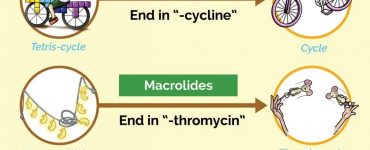An effective NCLEX exam strategy is key for preparing and passing the exam. Learn how to answer NCLEX-style questions with the following information and tips from Kevin Gibson BSN, RN (@thebootnurse).
Here are some key points you should take note of:
Purpose of the NCLEX exam
The NCLEX assesses your nursing competence and ensures you meet the minimum, basic knowledge to practice as a nurse. It also ensures public safety, allowing only qualified individuals to acquire licensure thus safeguarding patients’ and other’s health.
Furthermore, the NCLEX exam standardizes licensure, ensuring competency and fairness in evaluating future nurses. For nurses, licensure further enhances professional mobility as it’s required to practice nationally.
Overall, the NCLEX supports quality assurance in future nurses, again, making sure they have the entry-level nursing skills and knowledge to practice. This purposefully guides education and curriculum development for nursing schools, providing insight for areas of improvement on better preparing future nurses!
How to approach NCLEX questions

The nursing process, ADPIE, is exactly how you’ll begin to approach your NCLEX exam. Step by step, apply and follow the nursing actions below to answer questions on the NCLEX.
- Assessment: Assess the situation.
- Diagnosis: Provide a diagnosis.
- Planning: Make a plan of action.
- Implementation: Implement plan.
- Evaluation: Evaluate the outcome.
- Health promotion: Prevent illness, provide preventative care, and promote healthy habits.
- Advocacy: Advocate for the well-being of the patient.
- Collaboration: Collaborate with other healthcare professionals and teams.
- Documentation: Accurately and religiously document! Follow the saying, “If you didn’t document it, it didn’t happen.”
NGN Test Structure

For proper NCLEX Next Gen prep, you need to know the test structure. From client needs, integrated processes, and clinical judgment, familiarize yourself with the NGN structure.
- Client Needs: The NCLEX distribution of content lies across the following eight sections. The bolded percentages are the three largest topics!
- Safe effective care environment
- Management of Care (15-21%)
- Safety and Infection Control (10-16%)
- Health Promotion and Maintenance (6-12%)
- Psychosocial Integrity (6-12%)
- Physiological Integrity
- Basic Care and Comfort (6-12%)
- Pharmacological and Parenteral Therapies (13-19%)
- Reduction of Risk Potential (9-15%)
- Physiological Adaptation (11-17%)
- Safe effective care environment
- Integrated Processes: Processes include how to prioritize patient care and address changes in a patient’s situation as well as working well with others on the care team.
- Caring: Fostering mutual respect between the patient and yourself.
- Clinical judgment: Using critical thinking to make evidence-based solutions.
- Clinical problem solving: Collecting data, planning, following trends, implementation, and evaluation.
- Communication and documentation: Proper modes of documentation and effective communication between fellow healthcare teams.
- Culture and spirituality sensitivity
- Teaching and learning: Nurturing a positive learning environment for yourself, the patient, and others.
- Clinical Judgment
- You’ll hear this term A LOT when talking about the NGN. This refers to the ability of a nurse to use their knowledge, experience, and critical thinking skills to make informed decisions about a patient’s care. You will be required to synthesize information from various sources such as patient history, assessments, medical records, and lab data, and apply your knowledge to develop a treatment plan. Then, evaluate the outcomes of said plan.
NCLEX vs NGN: Changes to Expect
The NCLEX hasn’t changed dramatically since 2019. However, there have been slight changes and improvements to the exam—like measuring clinical judgment with the NCBSN’s research-based questions. Here’s what to expect.
- Clinical judgment: The NGN better measures clinical judgment.
- Change in distribution of content: New question types and slight content changes have been made.
- Slight content amount changes in the management of care and safety and infection control.
- Pharmacology is up in content percentage by one.
- Old question types are still present, but additional questions have been introduced.
- Case scenario: These questions have multiple tabs split across screens. There are about 2-8 questions that may be derived from a single question.
- Extended multiple choice: You can receive partial credit for this question.
- Drop-down answers: Within a list of possible answers, you must complete a sentence. You must get both correct to receive a point.
- Extended drag and drop: You have to drag responses into blank answer spaces. You can use some or all of the answers.
- Highlight text: Highlighting typically asks you to select the important things you need to know.
- Matrix/grid: Select all that apply questions.
- Trend
- Exam length: The NCLEX used to be 75-150 questions with 15 unscored practice questions. Now, the NGN is 85-150 questions with 15 unscored practice questions. You still have 5 hours to complete the exam.
- Scoring: There is 0-1, +/-, and rationale scoring for NCLEX questions. Read everything you need to know about NCLEX scoring to learn more.
- NCLEX terminology: Changes have been made to update terminology.
NCLEX Style Practice Questions
It’s time to put yourself to the test with NCLEX-style practice questions! Try the following practice question to get started.

Question: The nurse witnesses the collapse of a child while at a sporting event. The child is not breathing and has a pulse of 50/min. The nurse calls emergency services and initiates rescue breathing. After 2 minutes of rescue breaths, the child is still not breathing and is pale with a pulse of 30/min. Which of the following actions should the nurse take next?
a. Initiate chest compressions
b. Provide rescue breaths for an additional 2 minutes
c. Perform abdominal thrusts.
d. Use a finger to check the mouth for blockage
Hint: The keyword here is next. What is the next appropriate step after the pulse continues to decrease after rescue breaths?
Rationale: Infants and children (age 1 to puberty) often develop respiratory distress and bradycardia prior to cardiac arrest. After witnessing the collapse of a child who is not breathing but has a pulse, the nurse should contact emergency services and begin rescue breathing.
Rescue breathing is performed at a rate of 1 breath every 2-3 seconds. If the pulse remains <60/min and there are signs of poor perfusion (eg, skin pallor), the nurse should initiate chest compressions and reassess the pulse every 2 minutes (option A).
Option B: If the heart rate increases >60/min with signs of adequate perfusion (eg, skin pink, capillary refill <2 seconds) but the child is still apneic, rescue breaths should continue.
Option C: Abdominal thrusts are done to expel a foreign object from a client who is choking but responsive. In the event that the child becomes unresponsive, the nurse should lower the client to the ground and begin chest compressions.
Option D: A finger sweep of the client’s mouth can force a loosely obstruction object to fully block the airway or cause the object to fall farther down into the airway. Blockages should be removed only if they are visible and easily accessible.
For more practice, support, and prep for NCLEX, sign up for Picmonic.














